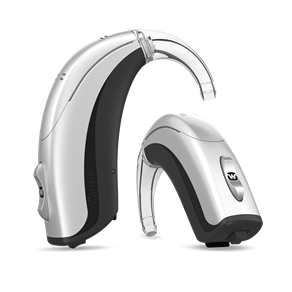Recently, many hearing impaired people have been asking us about the benefits of binaural hearing aids. Here’s a look at the top 10 benefits of binaural hearing aids with Spieth.
1. Improve sound source localization ability
The human ear has a very strong ability to localize sound sources. However, it is a prerequisite that both ears must have equal hearing thresholds. The transmission of sound through the air is subject to changes in energy and velocity, and if there is a hearing loss and an asymmetry in thresholds, it is impossible to determine the direction of the sound source. Therefore, the binaural option hearing aids can better improve the ability to locate the sound source.
2. Improve noise reduction and speech understanding
The auricle of the human ear has sound collection and noise reduction functions. For a hearing impaired patient, it is very important to improve the signal-to-noise ratio. Wearing them in both ears means that both auricles have both sound collection and noise reduction capabilities, which is of great importance for improving speech discrimination.
3. Enhanced binaural loudness integration effect
Binaural hearing receives a higher level of sound loudness than monaural hearing, and at the threshold level, binaural thresholds are better than monaural thresholds by about 3 dB. At the suprathreshold level, binaural thresholds are better than monaural thresholds by about 10 dB. Thus, wearing hearing aids binaurally allows for a slightly lower overall gain for each hearing aid, which reduces the potential for acoustic feedback and improves battery life. It also helps to improve speech intelligibility after hearing aids more for patients with severe deafness.
4. Avoiding delayed auditory deprivation effect
The main reason for the auditory deprivation effect is that the hearing-aided ear sends enough information to the brain that the brain stops paying attention to the non-hearing-aided ear, and the brain seems to give up paying attention to the ear that transmits weaker signals. To avoid this phenomenon, the most effective solution is to use hearing aids in both ears at the same time.
5. Delaying the decline of the auditory nerve
The solution to auditory deprivation is to address the progressive decline in the function of the auditory nerve. The nerve cells in the hearing center rely on sound stimulation to achieve movement. Therefore, it is very important for each patient with bilateral hearing loss to be able to have both ears in a normal audible state, and to induce excitation of the auditory nerve through acoustic stimulation.
6. Improve listening comfort and participation in multi-person conversations
Since hearing aids for both ears improve the ear’s own sound collection, noise reduction, gain, positioning, balance function and fusion effect, the user will greatly improve the signal-to-noise ratio and excellent listening comfort for the sound signal heard.
7. Eliminate head shadow effect
If a patient has asymmetrical hearing loss in both ears, when the sound comes from the direction of the poorer hearing side of the ear, it will turn the better hearing side of the ear toward the sound source, which is the head shadow effect. This is known as the head-shadow effect. During fitting, it has been found that a significant number of patients with unilateral fitting have great difficulty hearing sounds from the opposite ear and tend to turn the hearing aid towards the other ear. If the patient wears the hearing aid in both ears, the head shadow effect will be solved and the patient will be able to listen to the sound from multiple sources easily and comfortably.
8. Suppressing (masking) tinnitus
The amplification of the hearing aid will suppress the sensation of tinnitus, and if the hearing aid is worn unilaterally, the tinnitus may still exist on the other side, which will affect comfort and clarity. Therefore, if you have tinnitus or tinnitus in both ears, you should try to have hearing aids for both ears in order to improve the comfort and intelligibility of listening.
9. Prevent unilateral hearing fatigue
Most patients who use hearing aids unilaterally lack the integration effect, noise reduction and sense of orientation. Often, they take the approach of increasing the volume of their hearing aids without restriction in order to hear or hear certain sounds clearly. Over time, the auditory nerve of the brain adapts to loud sounds and this results in an aggravation of the hearing threshold. Binaural wear, because of its ability to improve integration, noise reduction and orientation, will provide the ear with a relatively high level of comfort and signal-to-noise ratio, which will prevent frequent unilateral increases in volume and prevent auditory fatigue.
10. Reduce the ear plugging effect
The blocked ear effect is a subjective feeling of a significant increase in the loudness of low frequency sensations of self-generated sounds (such as talking, chewing, swallowing, walking, etc.). The greater the space left inside the ear canal when the external ear canal is closed, the less the blocked ear effect will be felt, and the opposite will be true. As binaural wear can improve the integration effect, especially the energy integration of low-frequency sounds is reduced, while the overall output gain of the hearing aid can be reduced. It has been shown that the blocking effect is greatly reduced in first-time or single-ear wearers when worn bilaterally.
Therefore, as long as hearing impairment exists in both ears, and provided that there are no other contraindications to fitting, binaural fitting should always be preferred.
More articles about hearing aid information.
SPIETH TAKES YOU THROUGH RIC HEARING AIDS IN ONE ARTICLE
HOW TO CHOOSE THE RIGHT HEARING AID PRODUCT?
INTRODUCTION OF RECHARGEABLE BTE OE HEARING AIDS
WEAR HEARING AIDS STEP BY STEP
Post time: Aug-26-2021
